Shobha Warrier in Chennai
Shaji N Karun's Kutty Srank is Anjuli Shukla's first film as an independent cinematographer.
What's more, the Malayalam film starring Mammootty won her a National Award (it won the Swarna Kamal for the best feature film in India).
Born and brought up in Lucknow, Anjuli did her cinematography studies at the Film and Television Institute in Pune.
Anjuli, who was in Chennai in connection with the screening of Kutty Srank, spoke to Shobha Warrier about working with Shaji N Karun and also on her current project Urumi with Santosh Sivan. Excerpts:
What inspired you to take up cinematography?
There was a strong urge to express myself and paintings were something that attracted me. But at that time, I had no inkling that it would result in cinematography. Slowly, I started taking pictures and it gave me a lot of pleasure. Then, I understood I wanted to be in the visual medium. That is why I thought the best place to go to is the film institute.
Once you started learning at the institute, how much did it excite you?
Days spent at the institute were very exciting. As a student, you have to do everything and learn everything from editing to directing short films to shooting to writing scripts.
While some of my classmates were from the film industry and had prior experience assisting senior cinematographers, I was raw. I am not from a film background. So, everything was new for me.
'I am very lucky that Santosh Siwan remembered me'
Image: A scene from Kutty SrankWas it tough to get a break once you passed out of the Institute?
I started my career assisting Santosh Sivan. He is an amazing cinematographer and director, no doubt about it. He had come to the Institute when I was a student and there was this interactive session. I expressed my desire to work with him. At that time, he was shooting a film abroad. When he was ready to shoot a film for Kerala Tourism, he called me. I am very lucky that he remembered me. I had graduated by then so I didn't have to wait long to start working with him.
How different was the experience of working with him, from what you learnt at the Institute?
Studying at the institute and working are two different things. Here, you get practical knowledge. Of course, we have projects to do on locations but there are limitations. But working with professionals is a totally different experience. You get to learn how they cope with various situations, how they light up a place, etc.
It was an enriching experience working with Santosh Sivan. Working on the Kerala Tourism ad was great. That was my first trip to Kerala and it is beautiful!
After that, I worked with him in a Malayalam film (Ananthabhadram), Hindi film (Tahan) and also a Hollywood production (Before the Rains, Mistress of Spice). It was a holistic experience because the way you work on a foreign production is different from a Malayalam or a Hindi film.
'I was not nervous'
Image: A scene from Kutty SrankHow did the offer from Shaji N Karun come to you? He said that he wanted a woman cinematographer because the film was from the perspective of three women...
Immediately after Tahaan, in early 2008, I got this opportunity. I am sure many names were suggested and I was one of them. Somehow, Shaji Chettan narrowed down on my name.
How did it feel to bag your first independent film?
It was a lot of responsibility. Someone has chosen you for a particular reason and you have to live up to their expectations, which is a huge responsibility. The responsibility was more because Shaji Chettan's last film Vaanaprasatham was shot by Santosh!
Were you nervous?
No. I was totally focused on work. I felt responsible, that's all. I wanted to have at least a few shots about which Santosh should say, okay, fine!
How did you look at the story of Kutty Srank?
First, it was his associates who narrated the story to me. Then, I had several discussions with Shaji Chettan. He had certain things in mind about the looks of the characters. He then told me that we would shoot in three different seasons which would match the desired moods of the characters.
I understood that the settings itself set the three women apart. The Kamalinee story was different from both Padmapriya and Meena Kumari's story. Each of these women belongs to a different class and milieu.
'You don't work expecting any award'
Image: A scene from Kutty SrankHow challenging was it to shoot in three different seasons?
As we timed the schedules, it was not difficult. The monsoon was a few days late but we did get to shoot the rains. The first part of the film, Padmapriya's story, was shot the last and it was shot in a dry place in Karnataka.
Which season was the toughest to shoot?
Every season posed its own challenges. For example, the first schedule, the story of Kamalinee, a lot of portions were shot on a boat in the backwaters of Kerala. We had to do a lot of travelling by boat. We had to light up a moving boat and carry the power supply etc. It was not easy shooting from a moving boat.
Did you expect to win the National Award for your very first independent work?
Not at all. You don't work expecting any award. All you want to do is give your best. It has resulted in an award.
'I don't feel that I have done something great'
Image: A scene from Kutty SrankWhat was Shaji's reaction?
He called me the moment he came to know about it. It was so gracious of him. I was shooting in a faraway place where there was no network. He could get through to me only in the evening. He was very happy for me!
What was your reaction?
I was very normal hearing the news. But those around me were very excited. I am so new and this is my first work. I don't feel that I have done something great. Let me do a lot of work first.
What is your present project?
I am shooting for Santosh Sivan's Urumi. Like always, he is the DOP (director of photography) and Alphons Roy and I are also there. It is a big project. We are shooting with more than one camera.
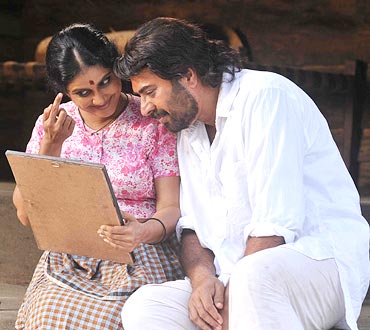
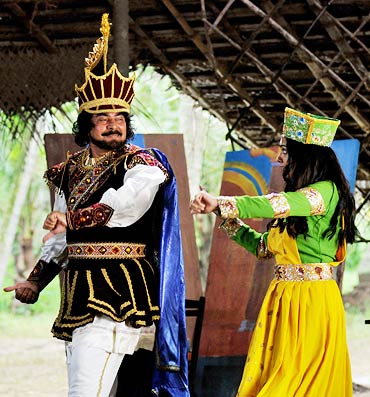
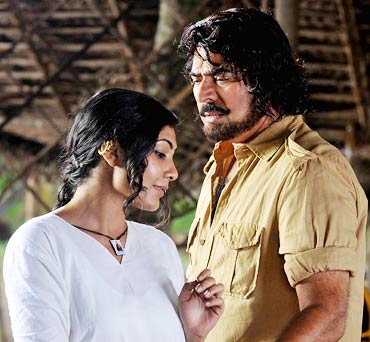
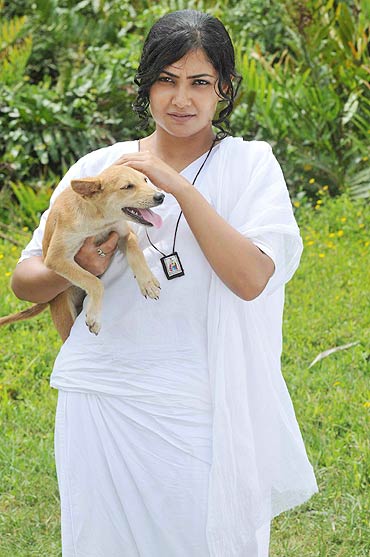
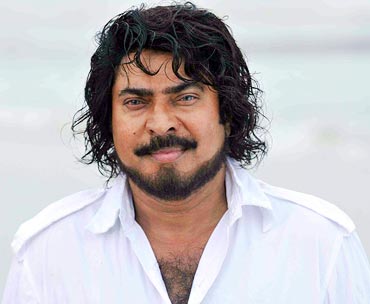
Comment
article